Lower your internet bill
61% of people overpay for their internet.
Are you one of them?
Unlock exclusive offers in your area!
Call now
[tel]Enter zip code
1 Star is Poor & 5 Stars is Excellent.
* Required

Written by Rosslyn Elliott - Pub. Jan 05, 2023 / Updated Mar 18, 2024
Table of Contents
Are you happy with your Internet service?

About the author
Wow. Overwhelm. That can be the feeling when you first wade into the rushing river of information about choosing an internet provider.
In some ways, all that information is a good thing because it means you have choices. Many people now have five or six options when they choose their internet service providers. If you live in a major metropolis like New York City, you may have over 60 internet providers spread across different boroughs!
So where do you start? Here, you’ll find 7 must-know factors to help you choose the internet provider that is best for you.
There’s no such thing as a one-size-fits-all best internet plan. Knowing what you need from your internet service will help you find the best deal and avoid unnecessary spending on internet speed. You’ll be able to pick just the right bandwidth to enjoy all your favorite internet entertainments or work from home.
Yes, there’s a raging river of information out there, but with these 7 fundamentals, the journey to finding your internet service provider can be faster and less confusing. This guide will give you the kayak and paddle you need to get through that deluge of information! Your best choice of internet providers is just around the bend.
First things first: to make your best decision, you’ll need to know the basics about each common type of internet service. Some technologies are much faster than others but not as widespread, so they may not be available at your home. Other types of internet service are available to almost every home in the USA. Some technologies have been around for decades, while other advances may be new from internet service providers this year.
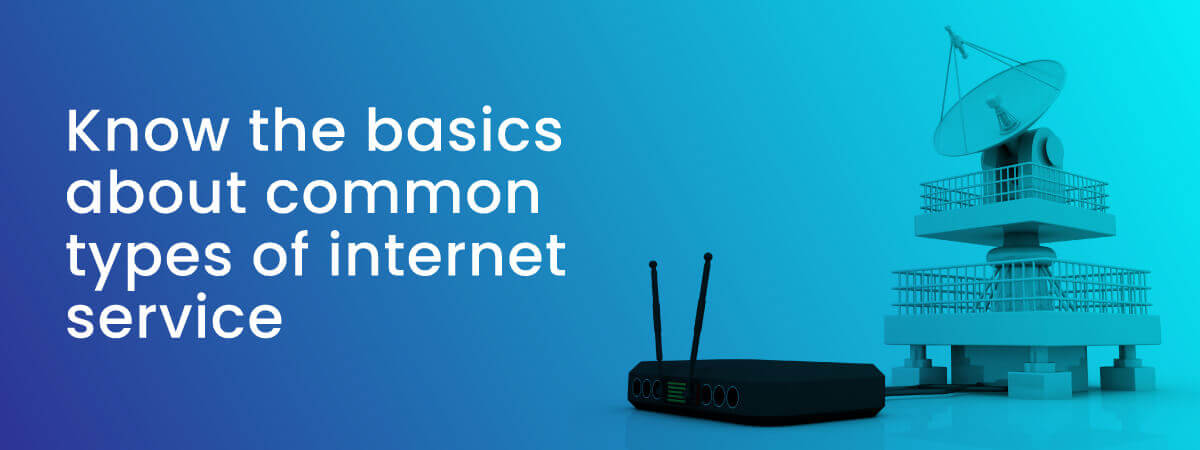
DSL (Digital Subscriber Line) works through telephone lines. When DSL internet was new in the 1990s, it was a huge improvement over dialup internet. Both dialup and DSL used phone lines, but DSL separated the frequencies of voice calls and data transmissions so you could do both at once. That meant you no longer got disconnected from the internet every time your phone rang. In addition, DSL was ten times faster than dialup.
The tricky thing about today’s DSL is that the technology varies widely. Older DSL internet is still very slow by today’s standards, hovering at around 1-6 Mbps download speed. Newer and hybrid DSL can offer faster DSL speeds, up to 25-5o Mbps download.
Some DSL providers will claim that their fastest internet speeds can go up to 100 Mbps download, sometimes by using a combination of DSL cable and fiber-optic lines.
The FCC report on actual internet speeds in 2021 found that while most internet service providers exceed their advertised speeds, DSL providers are more likely not to meet their advertised speeds.
If you’re considering a DSL-based internet service, you should investigate through local sites like NextDoor.com. See if you can get your neighbors to give you the scoop on their actual internet speeds.
Cable internet flows through the same coaxial cables as cable television. It is usually much faster than DSL. Some of the top cable internet providers offer speeds up to 1000 MBps download (often called 1 Gig). Achieving gigabit speeds has made some cable plans as fast with their download speeds as many fiber internet plans.
Because you use the same cable lines as your neighbors, your cable internet can sometimes be affected by network congestion in peak hours. But as cable technology has advanced, cable providers have added more nodes in neighborhoods to help prevent slow downs at peak hours.
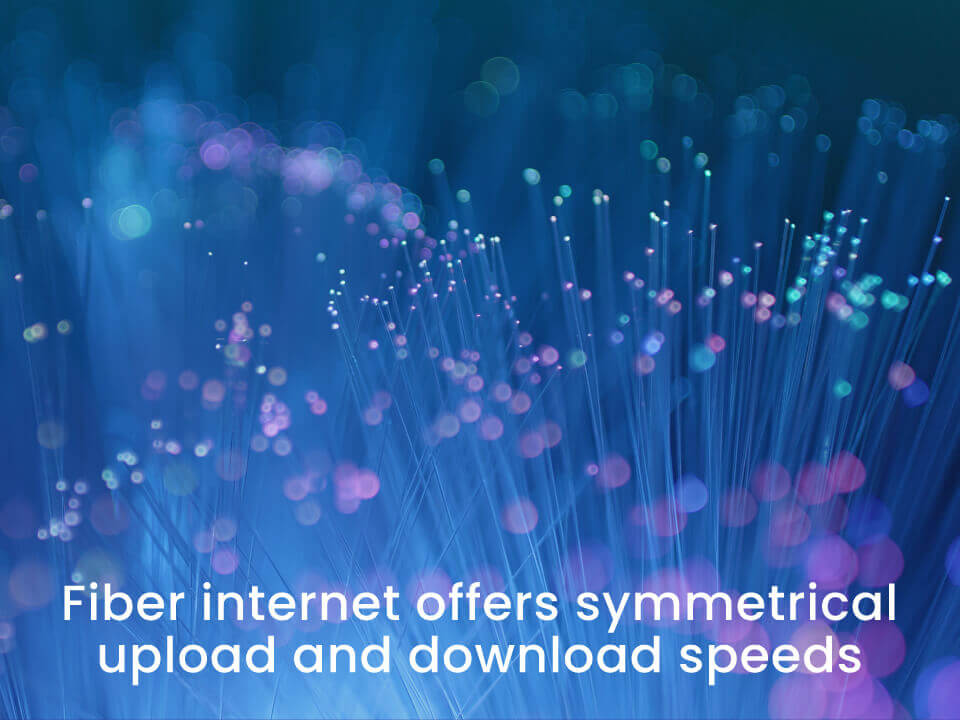
Fiber optic internet is the newest, fastest wired internet technology. Fiber uses pulses of light that travel through fiber-optic lines, instead of sending electric data signals like cable. Light moves faster than electricity, so fiber internet is much faster than all previous technologies.
Top fiber internet providers now offer plans with up to 5000 Mbps download speeds (5 Gbps). In addition, fiber internet speeds are symmetrical, meaning that download and upload speeds are the same.
Symmetrical upload speeds and download speeds are a breakthrough because non-fiber types of internet connection usually have much faster download speed than upload speed. For some users, faster upload speed can be crucial, as we’ll explain in the section of this guide dedicated to internet speed.
Fixed wireless internet service providers (WISPs) broadcast their signals from towers stationed near their service areas. If you choose fixed wireless service, you will have an antenna at your home to receive the signal. That antenna must have an unobstructed view of the tower.
Fixed wireless service is more common in populous areas such as cities. Because towers need to be only 10 miles away from your receiver, fixed wireless is still not available in many areas. Speeds can vary from 5-1000 Mbps, though some WIPS are now offering up to 1000 Mbps.
Evercore’s recent fixed wireless study found that 5G fixed wireless speeds averaged about 100 Mbps download and 20 Mbps upload. For 4G LTE, fixed wireless speeds averaged 10-50 Mbps download and 5-10 Mbps upload. Fixed wireless LTE is much more common than 5G, and as you can see from these statistics, much slower.
Fixed wireless providers will sometimes have monthly data caps on your plan, which can affect your internet speed or cause overage charges.
Satellite internet service has long been known as the most reliable and available internet for rural areas and remote parts of the country.
You will not need any wired infrastructure if you choose satellite internet. Your satellite dish will send and receive signals from satellites in space. Satellite internet providers keep those satellites in orbit, which requires significant investment.
Accordingly, one of the drawbacks of satellite internet service is that it does tend to be more expensive than other types of internet connection.
A second weakness of satellite internet is that most satellite plans have monthly data caps for users. Because satellite internet providers have to share their satellite’s bandwidth with many users, they have to carefully control the fair distribution of data with these data caps.
Satellite users pick their satellite internet plan by choosing a monthly data allowance such as 15 GB, 50 GB, or 150 GB. If you just email and browse the internet, these data caps will be fine. But if you stream a lot of video, you can run through your data allowance quickly. When you reach your data limit, your internet will slow down to a speed as low as 1-3 Mbps, meaning that you will only be able to do a few basic tasks such as checking email.
Satellite internet providers may claim that their plan offers “unlimited data," but that phrase usually refers to these soft data caps that cause your internet to slow down.
Satellite providers such as HughesNet have implemented systems to make these data allowances more user-friendly. For example, HughesNet allows the purchase of Data Tokens if you exceed your monthly data allowance, so you can continue to use your internet service at a normal speed. HughesNet also offers a Video Data Saver that allows you to stream movies at a slightly lower resolution to save data consumption.
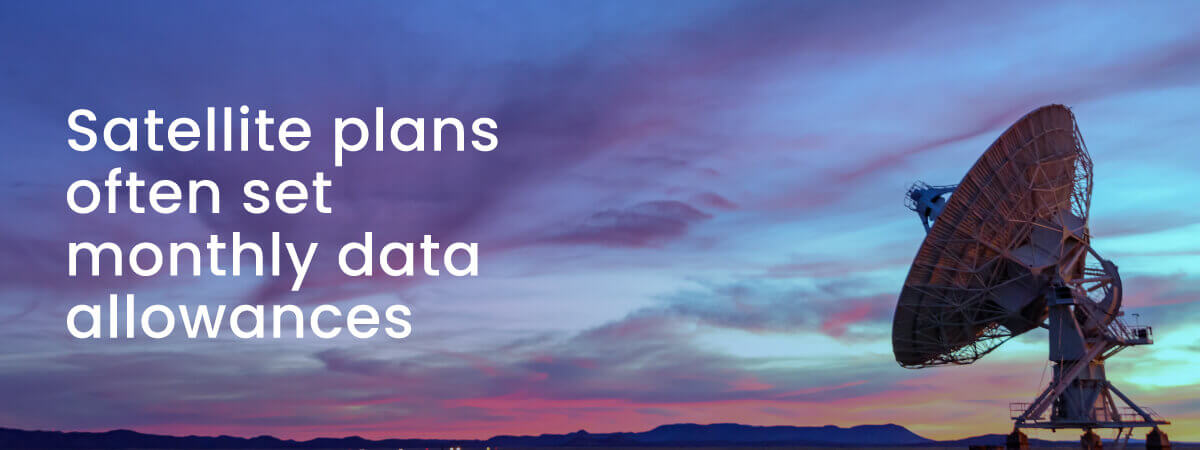
Now you know a little more about what speeds each type of internet service provider can offer.
Let’s move to the most important question when you’re choosing an internet provider: how much internet speed will you need?
If you already have internet service, and you’re thinking about picking a new internet provider, first make sure you know what your speed is from your current internet provider. You can test your internet speed here.
Different websites will give you conflicting guidance about how much internet speed is actually necessary for certain internet activities. One thing is certain. Unless you live in an unusual household, it is highly unlikely that you will need a 5000 Mbps (5 Gbps) fiber internet plan.
Determining how much speed you actually need will prevent you from wasting money on speed that you won’t use.
Since 2015, the FCC has defined high-speed internet as 25 Mbps download/3 Mbps upload speeds. For most internet activities, those speeds would be adequate. However, as many people have discovered since the rise of remote work and streaming video, some tasks are far more data-intensive than others.
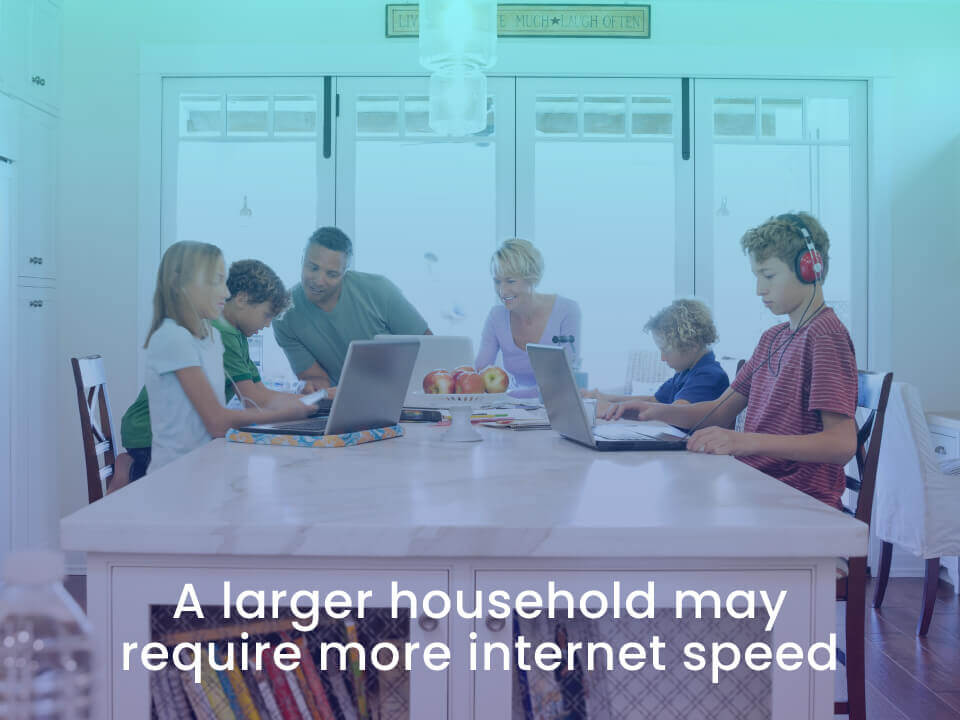
How many people will be in your household, and how many of them will be streaming simultaneously on multiple devices? Though a large household sometimes means more speed is necessary, that’s not always true. How much data will you actually use?
Take these two cases.
Let’s say you have a household of two adults. Neither of you works from home or plays online games. You also have three children under the age of 6, but none of the kids are allowed on the internet. So at most, you have two people streaming different HD movies at the same time. In that case, you’d probably be fine with a 50 Mbps download speed. Even 25 Mbps might cover you.
But here’s a completely different case with the same size household. Maybe you live with four college friends, and all of you are avid movie buffs who want to watch your own individual movies at night, all streaming in Ultra HD on multiple devices at peak hours. Hmm. That’s getting a little more data-intensive. You might be best advised to get a plan of 100 Mbps download speed or more. Real-time online gamers will also use a great deal of data.
Streaming content to your computer from the internet is all about download speeds. But there are two other types of speed that will make a difference for your internet activities.
Most types of internet have very lopsided, asymmetrical speeds that mean your upload speed is much slower than your download speed. If almost everything you do is download-based, that won’t matter.
Activities that will require faster upload speeds are:
Most of the time, an upload speed of 10 Mbps is fine for these activities.
The only time you may need more upload speed is if you have several people performing these upload-based activities all at once. In that case, there’s no question that a fiber connection will give you the most upload bandwidth of all the internet services.
Latency is the third pillar of your internet speed. Latency means a slight delay or lag caused when an internet signal has to travel a great distance.
The internet service providers known for the highest latency are satellite services. That’s only natural: some satellites are over 20,000 miles away from Earth.
If you mostly use your internet access to check email and browse the web and social media, you may never even notice latency.
Latency will have the most negative effect on real-time activities such as videoconferencing and multiplayer online gaming.
While you may be able to do some videoconferencing on satellite services with at least 25 Mbps download/3 Mbps upload, real-time gaming is simply not recommended at all over satellite. In addition to the problems you will experience with latency, real-time gaming is also a very high-data activity that would quickly consume your monthly data allowance.
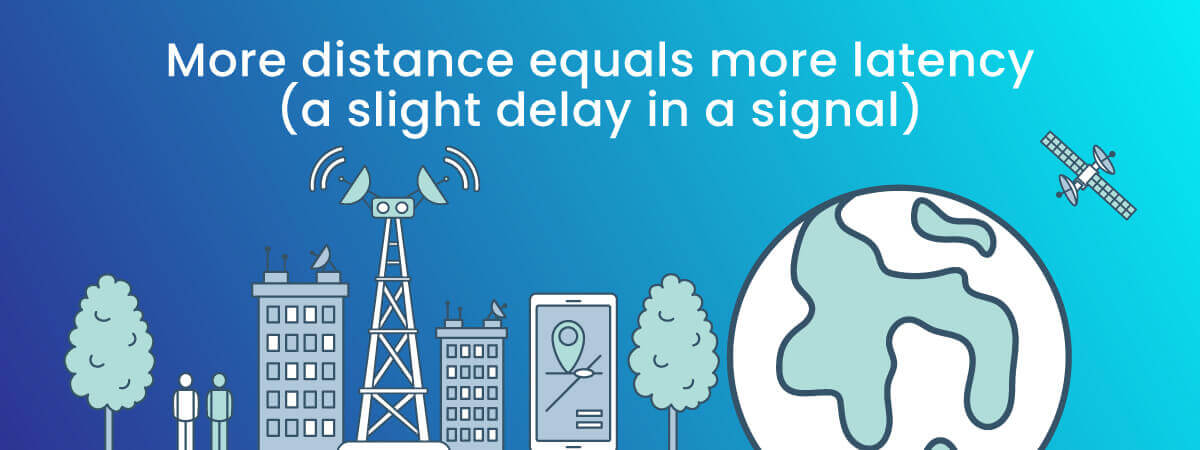
To find the best internet service for you, you will have to choose from the coverage options available from internet providers at your address.
Your internet access can only come through the internet service providers that have the technology to reach you. The more urban your area is, the more choice you will usually have in potential internet services.
But even some densely populated urban neighborhoods don’t yet have cable or fiber. And in rural areas, there’s a chance your only available internet service provider will be a satellite carrier. Still, that satellite service may be a vital way for you to stay connected with the world, now that jobs and education are widely available through the internet.
The good news for everyone in the long term is that the federal government has recognized that high-speed internet access is crucial to opportunity in today’s digital world. The Rural Digital Opportunity Fund makes over $20.5 billion available over the next ten years to build more high-speed internet infrastructure across the nation’s rural areas.
At the same time, satellite technology is also advancing by leaps and bounds. The next few years may widen your choices immensely.
But for now, whether you have options for many internet providers or only two, you can still make your best choice when you’re informed.
Let’s say your home only gets satellite internet service providers. Even then, you may have a choice of two different providers. Knowing the 7 basic factors here in this guide can still make a big difference in whether you choose the best internet service provider at the lowest price possible.
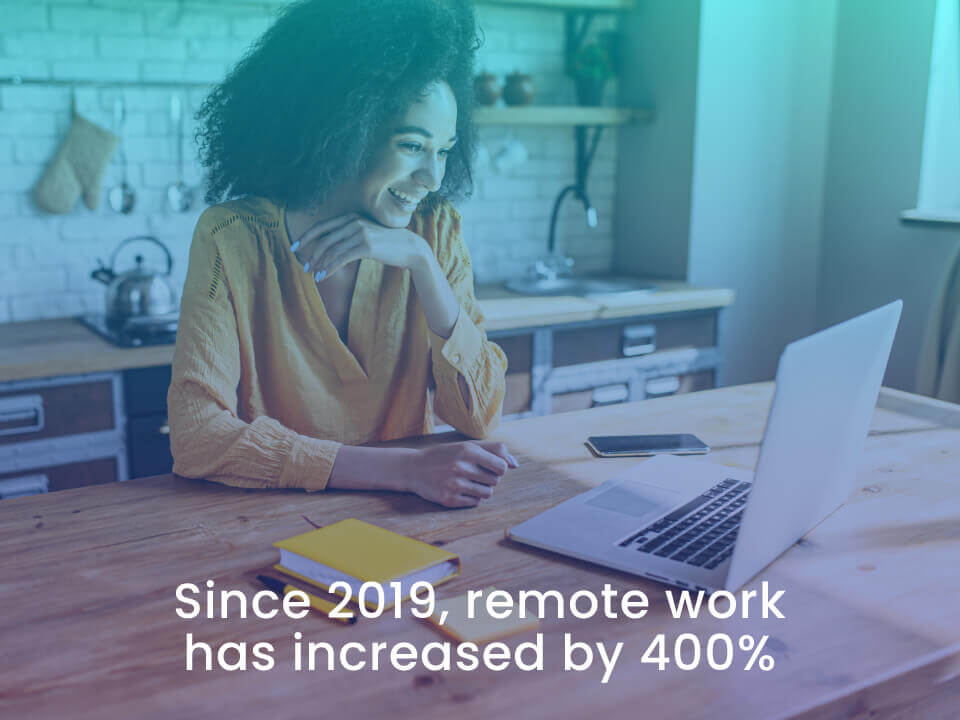
Reliable internet means an internet connection that doesn’t fail frequently. With 26% of Americans now working from home, there are four times as many remote workers as there were in 2019 before the COVID-19 pandemic. If you work from home or would like to do so in the future, you need an internet connection that does not fail.
There are three major reasons your internet may stop working or become unusably slow: network congestion, infrastructure problems, and weather.
Fiber connections are the most reliable as well as the fastest technology available. Because of fiber’s high bandwidth, it is not vulnerable to network congestion.
Cable provides fairly reliable internet, with a couple of caveats. First, cable is more vulnerable to network congestion at peak times. Second, some cable networks do experience more power or line-related outages than others depending on your location. Reliability is another factor you can check by word of mouth with your neighbors.
DSL connections are not vulnerable to network congestion, though they are usually slower than cable.
Both satellite and fixed wireless connections can be affected by bad weather.
Internet plans vary so widely that comparing prices is key to finding the best internet providers.
If you want a first-tier internet plan in fiber, cable, or DSL, you can often find one for about $50/month. In internet service provided by wired infrastructure, you will usually pay for plans tiered by speed. So, for example, you might pay $50/month for the first-tier plan and $75 a month for the second tier plan. Top-tier fiber internet plans can get expensive, at $150/month for 2000 Mbps/2000 Mbps speeds.
For non-wired internet service providers such as satellite and fixed wireless internet, you may be purchasing your plan based on your data allowance. Be aware that the lowest tier plan, such as 15 GB/month, will only work for you if you mostly use your internet for email and light web browsing.
Your plan may contain some hidden costs based on whether you have agreed to an annual or two-year contract. When you commit to a contract, your internet service provider may charge early termination fees if you end your service before your contract is over.
Don’t forget to calculate the cost of any additional fees. Some internet service providers may charge an additional monthly fee if you rent their modem instead of using your own equipment. Others will include free equipment rental in your monthly plan price.
If you choose satellite, you may not want the up-front expense of buying your own satellite dish and modem for $350-550. In that case, a modest monthly equipment rental fee of $10-20/month may be your best way to get online.
Finally, if you are signing up for a plan with a data allowance, check whether your new internet service provider will charge you a fee for data overages. Don’t assume that “unlimited data" means what it says: check the fine print.
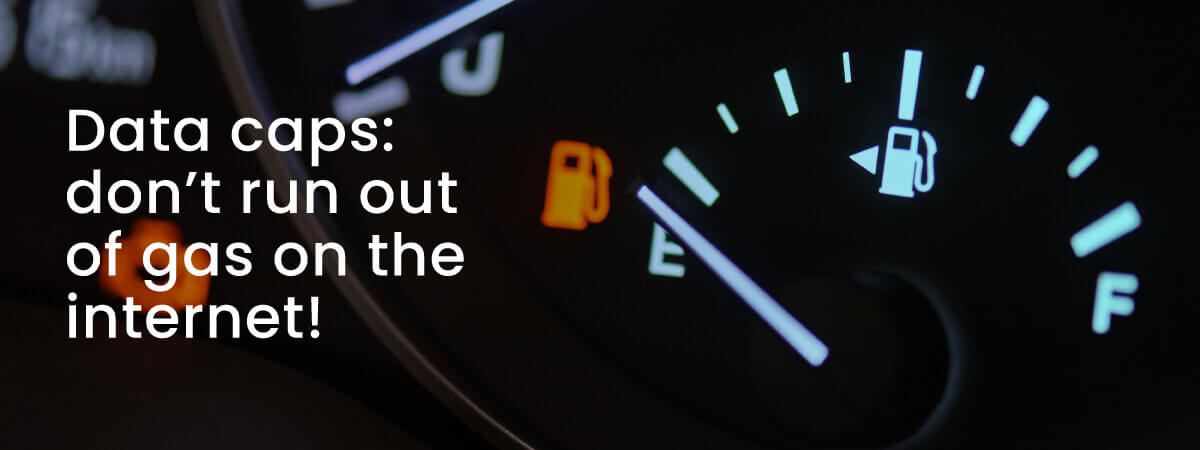
So maybe you’re thinking of switching providers to get the best deal. Maybe you’re seeking a new internet provider because you’re moving to a new home. Or maybe you’ve found that your current internet plan is no longer fast enough for your needs.
Whatever your situation, only you can decide what speed you need and what price fits your budget. But you can also get input from other customers on your internet options.
Check surveys such as the American Customer Satisfaction Index to see how other customers have rated their satisfaction with their internet service providers. If you’re trying to find internet providers that will work for you, knowing how other customers feel about their ISPs can be helpful.
You can also check out objective lists of top ISPs from major journalistic sources. Always look for a methodology that describes the factors on which they rated the companies on their list. If you have special online needs such as real-time gaming, you might want to search out specific topics such as Best ISPs for Gaming from PC Magazine.
When you’re talking to an internet service provider, these questions can help you get all the details you need to find the right plan.
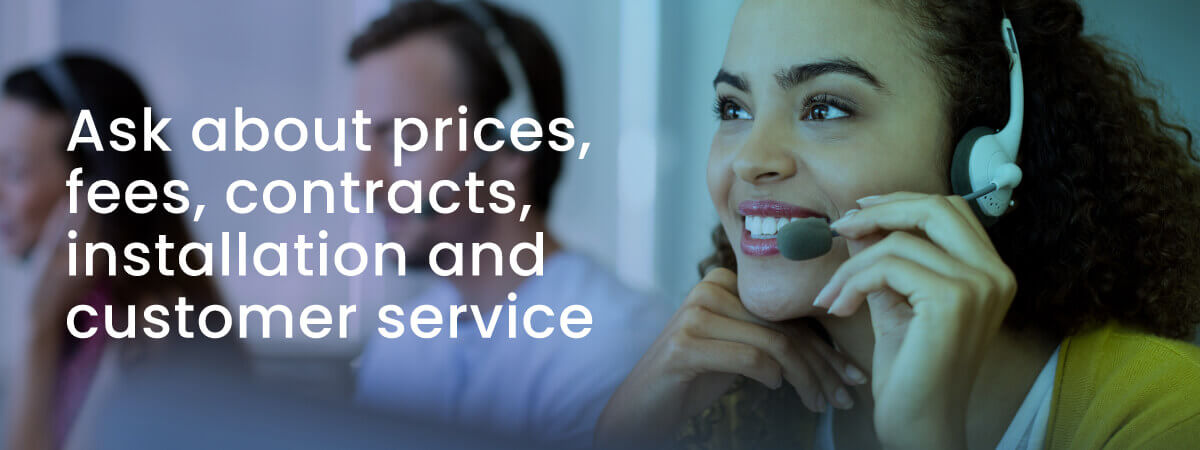
The U.S. government is working to bring broadband services/high-speed internet to more Americans. If you qualify, you can get assistance of $30/month toward your internet plan from the Affordable Connectivity Program.
Infrastructure such as cable and fiber wiring is expensive to install. It can take ten miles of cable or fiber to reach one home in a rural area. Until this time, internet service providers have concentrated on building infrastructure where there were denser concentrations of customers. It made business sense to build ten miles of fiber through a city, where thousands of customers could pay for internet connections. Fortunately, the federal government and private partners are stepping in to ensure that more rural customers have high-speed internet options.
Yes, in a rural area, having broadband internet may be even more important than if you live in a city. The internet is bringing unprecedented opportunity to rural areas. Never before have there been so many work-at-home opportunities that require only an internet connection. You can also attend any one of thousands of accredited training programs and schools. Opportunity is only one advantage: your entertainment and social options are also vast through the internet.


About the author
Congratulations, you qualify for deals on internet plans.
Speak with our specialists to access all local discounts and limited time offers in your area.
[tel]61% of people overpay for their internet.
Are you one of them?
Unlock exclusive offers in your area!
Call now
[tel]Enter zip code